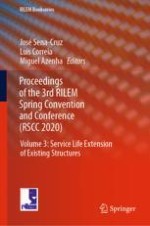This book gathers peer-reviewed contributions presented at the 3rd RILEM Spring Convention and Conference, held at Guimarães and hosted by the University of Minho, Portugal, on March 9-14, 2020. The theme of the Conference was “Ambitioning a Sustainable Future for Built Environment: comprehensive strategies for unprecedented challenges”, which was aimed at discussing current challenges and impacts of the built environment on sustainability. The present volume is dedicated to the topic “Service life extension of existing structures”, which covers the most recent scientific and technological developments in the understanding of the evolution and degradation of construction materials and structural systems. Analytical and numerical, as well as experimental approaches, aimed at characterizing, modelling and predicting the evolution of the physical, chemical and mechanical properties of construction materials and structural systems are regarded. Multiphysics models are also considered, as well as other strategies that contribute for an accurate characterization and prediction the service life and the evolution of existing and novel construction materials under normal or extreme environmental exposure or loading conditions. New strategies to promote the smart repairing or the recovery of material properties, as well as the service life extension, are also considered. The following subtopics are included: service life models and multiphysics approaches; smart structures, innovative monitoring and intervention strategies; management and optimized maintenance strategies; integrated rehabilitation and strengthening approaches.
